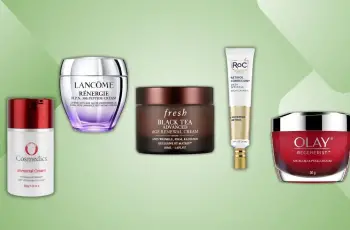
How to Winter-Proof Your Skin
A Complete Guide to Transforming Your Skincare Routine for Cold Weather
As we say goodbye to summer and begin the transition into cooler, crisper days, it’s the perfect time to start thinking about how the changing seasons can impact your skin. While the idea of cozy sweaters and mugs of hot chocolate may sound appealing, the winter months bring with them a slew of challenges for your skin. From dry patches and flakiness to irritation and dullness, the cold can be quite a formidable foe when it comes to maintaining a healthy, radiant complexion.
So, instead of waiting until the first snowfall to react, let’s talk about how to winter-proof your skin—and do it the right way. Whether you have dry, oily, combination, or sensitive skin, this guide will help you adapt your skincare routine and glide through winter with skin that’s hydrated, glowing, and resilient.
Why Winter Wreaks Havoc on Your Skin
First, let’s understand why skin suffers so much in the winter months. Cold air, low humidity, harsh wind, and indoor heating all work together to strip moisture from your skin. For people with dry or sensitive skin, this can lead to tightness, flaking, and even cracking. Oily or acne-prone individuals aren’t safe either—while your skin might feel less greasy in winter, the dryness can sometimes cause your skin to overcompensate by producing more oil, leading to breakouts.
The result? A compromised skin barrier that’s less effective at protecting you from environmental stressors. But don’t worry—we’ve got a game plan.
Step 1: Exfoliate… but Gently
One of the most overlooked yet essential steps in any winter skincare regimen is exfoliation. Yes, I talk about it a lot—but for good reason! Regular exfoliation removes the buildup of dead skin cells, which can leave your face looking dull and make it harder for moisturizers and serums to absorb properly.
Why It’s Extra Important in Winter
In cold weather, your skin’s natural cell turnover process tends to slow down. This means dead cells linger on the surface for longer, leading to flaky patches, clogged pores, and an uneven texture. Without exfoliation, even the most expensive moisturizer won’t penetrate effectively.
What to Use
Go for a gentle exfoliant with hydrating and soothing ingredients. Harsh physical scrubs with jagged beads can cause microtears, especially on dry or sensitive skin. Instead, choose a chemical exfoliant like lactic acid or mandelic acid, which can slough away dead skin without irritation. Or, if you prefer a scrub, look for one like Procoal’s Exfoliating Face Scrub, which uses detoxifying charcoal and gentle pumice.
Just remember—exfoliate 1–2 times a week, max. Overdoing it can damage your skin barrier, making dryness and sensitivity worse.
Step 2: Hydration, Hydration, Hydration
It cannot be said enough: hydration is key during winter. While drinking enough water is always important for overall health, it’s not always enough to keep your skin plump and moisturized—especially during the colder months when the environment is actively drawing moisture from your skin.
Inside-Out Hydration
Your skin is your body’s largest organ, but ironically, it’s often the last to receive hydration from what you consume. Think of your body as a queue at a water fountain. Your brain, heart, and vital organs get first dibs. Your skin? It’s usually at the back of the line. That’s why topical hydration becomes even more crucial during winter.
What to Look for in Hydrating Products
Humectants: These draw water into the skin. Look for ingredients like hyaluronic acid, glycerin, and aloe vera.
Emollients: These soften and smooth the skin. Examples include squalane, shea butter, and ceramides.
Occlusives: These create a barrier to lock in moisture. Think petrolatum, beeswax, or lanolin.
A great winter skincare routine includes a serum packed with humectants, followed by a thicker cream or balm that seals everything in. And don’t forget your eyes—the skin around them is thinner and more prone to dryness. A nourishing eye cream with peptides and hyaluronic acid will do wonders.
Step 3: Don’t Ditch the SPF
Just because the sun’s not blazing doesn’t mean you should skip sunscreen. In fact, SPF is still non-negotiable in winter.
The Winter Sun is Still Powerful
UVA rays (the aging rays) are present year-round and can penetrate through clouds and windows. They’re responsible for breaking down collagen and causing fine lines and hyperpigmentation. If you’re skiing or spending time in snowy areas, sun exposure is even more intense due to reflection from the snow.
Choose the Right Formula
In winter, opt for a broad-spectrum SPF 30 or higher that also contains hydrating ingredients. You can find moisturizers with SPF built in, but layering a dedicated sunscreen over your moisturizer gives you better protection.
Step 4: Don’t Forget Your Lips
Lips often bear the brunt of harsh winter conditions. They have no oil glands and can’t produce moisture on their own, making them extremely vulnerable to cracking, chapping, and discomfort.
Keep Them Soft and Smooth
Exfoliate: Use a gentle sugar scrub once or twice a week to remove dead skin.
Hydrate: Follow up with a rich lip balm that includes ingredients like shea butter, beeswax, and vitamin E.
Avoid licking your lips! Saliva evaporates quickly and leaves them drier than before.
Step 5: Treat Yourself to Weekly Masks
When your skin is feeling particularly parched or lackluster, a weekly face mask can be a game-changer.
Choose a Mask That Matches Your Needs
Sheet masks soaked in hyaluronic acid or marine collagen can instantly quench dry skin.
Cream masks with antioxidants and emollients will calm irritated or red skin.
Sleeping masks are great for locking in moisture overnight.
One go-to option is a Marine Moisture mask, which delivers a hit of hydration while soothing and restoring your skin’s barrier. Perfect for a Sunday night ritual or post-snowstorm recovery.
Step 6: Adapt Your Makeup Routine
Even with all the right skincare, your skin might still lack that healthy, dewy glow during winter. That’s where makeup comes in—to enhance what you’ve got and add that radiant, just-got-back-from-a-spa look.
Winter Makeup Tips
Swap mattifying products for dewy or satin-finish foundations and tinted moisturizers.
Use liquid highlighters and cream blushes to create a natural flush and lit-from-within glow.
Finish with a hydrating setting spray to keep everything in place without drying your skin.
Remember, makeup should enhance your skin, not mask it. If your base is well-hydrated, your makeup will sit better and last longer.
Bonus Tips for Ultimate Skin Protection
Use a humidifier: Indoor heating zaps moisture from the air. A humidifier helps maintain skin hydration.
Avoid hot showers: Tempting as they are, hot water strips skin of natural oils. Opt for lukewarm water and keep showers short.
Switch to a richer cleanser: Gel or foaming cleansers might be too harsh in winter. Use cream or oil-based cleansers that won’t strip your skin.
Final Thoughts: Prepare Now, Glow Later
Winter might be a tough time for your skin, but with the right approach, it doesn’t have to be. Think of your skincare routine as a form of self-care—one that not only helps you look better but also feel better through the darker, colder months.
So, before the temperature drops too low and your cheeks start to feel like sandpaper, take a little time to winter-proof your skincare routine. Your future self—and your glowing skin—will thank you.
And now that you’re prepped, enjoy that long August bank holiday weekend guilt-free. At least you know, come winter, your skin will be more than ready to face the chill. ❄️✨


